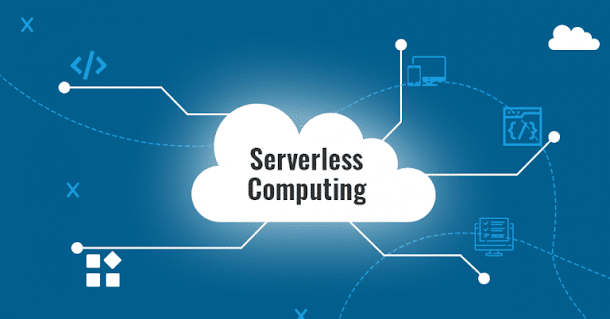If you want to learn about Active Directory fundamental from scratch, this is the right place. Active Directory (AD) is a critical technology developed by
Microsoft that serves as a centralized directory service for managing and
organizing resources in a networked environment. It plays a pivotal role in the
world of Information Technology (IT), particularly within organizations of all
sizes. In this guide, we will explore what Active Directory is, its importance,
the advantages it offers, its potential disadvantages, key features, different
versions, and how it operates, all while focusing on its applicability to small
and medium-sized businesses (SMBs).
1. Introduction to
Active Directory
At its core, Active Directory can be likened to a digital
filing cabinet, but its scope and capabilities extend far beyond mere file
organization. It functions as a comprehensive database that stores and manages
information about various entities within a network. These entities can include
user accounts, computers, printers, servers, and other network devices. Active
Directory provides a structured and hierarchical framework to represent these
objects, allowing for efficient management and organization.
2. The Importance of
Active Directory for Organizations
Active Directory plays a pivotal role in organizations for
several compelling reasons:
Centralized
Management
In a world where businesses and institutions increasingly
rely on technology, managing user accounts, devices, and resources scattered
across a network can become chaotic. Active Directory addresses this challenge
by centralizing the management of these resources. It acts as a single,
authoritative source of truth for an organization's digital assets, making them
easier to find, access, and administer.
Security Enhancement
Security is paramount in today's interconnected world.
Active Directory provides essential tools and features to enhance security
within an organization. It controls who can access resources, enforces password
policies, and offers authentication and authorization mechanisms that
significantly reduce the risk of unauthorized access, data breaches, and
security vulnerabilities.
Streamlined IT
Operations
In SMBs, where resources and IT personnel may be limited,
the efficient operation of the IT infrastructure is vital. Active Directory
simplifies and streamlines IT operations by providing a unified platform for
managing users, devices, and permissions. This results in reduced IT overhead,
minimized administrative workload, and improved resource allocation.
User-Friendly
Experience
Active Directory also greatly benefits end-users. Once it's
set up, users can enjoy the convenience of Single Sign-On (SSO), which means
they only need to log in once to access a multitude of resources. This not only
enhances user experience but also reduces the frustration associated with
managing numerous passwords.
3. Advantages and
Disadvantages of Active Directory
Advantages of Active Directory
1. Centralization: Active Directory brings order to the
chaos of network management by centralizing resources.
2. Security: It provides robust security mechanisms to
protect against unauthorized access and data breaches.
3. Simplified IT: SMBs can benefit from streamlined IT
operations, saving time and resources.
4. User-Friendly: Users experience the convenience of SSO,
reducing password management hassles.
Disadvantages of
Active Directory
1. Cost: Setting up and maintaining AD can be expensive,
especially for resource-constrained SMBs.
2. Complexity: The intricacies of Active Directory can be
challenging for those without significant technical expertise.
3. Resource Intensive: Active Directory requires dedicated
hardware and maintenance.
4. Key Features of
Active Directory
Active Directory boasts several key features that contribute
to its significance in network management:
User Management
Active Directory simplifies user account creation and
management. Administrators can easily create, modify, and delete user accounts,
assign privileges, and define attributes like names, emails, and passwords.
Security Features
Security is paramount, and Active Directory offers a range
of security features, including:
- Access Control: It controls who can access specific
resources.
- Password Policies: Password policies can be enforced,
enhancing security.
- Group Policies: Administrators can define and enforce
rules for computers and users.
- Auditing: AD logs activities, aiding compliance and
security monitoring.
Single Sign-On (SSO)
One of the standout features of Active Directory is SSO,
which allows users to log in once and access multiple resources without
repeated authentication.
Resource Organization
Active Directory employs a hierarchical structure with
Organizational Units (OUs) that lets organizations categorize and manage
resources effectively. It's akin to creating folders to organize digital files
but extends to the entire network.
5. Active Directory
Versions
Active Directory has evolved over the years, with each new version
bringing enhancements and new features.
Windows 2000 Active
Directory
- Introduced with Windows 2000 Server, this marked the birth
of Active Directory. It introduced domain-based networking, security policies,
and centralized management.
Windows Server 2003
Active Directory
- Windows Server 2003 brought improvements in security,
scalability, and manageability. It introduced features like forest trusts and
domain rename.
Windows Server 2008
Active Directory
- Windows Server 2008 introduced features such as Read-Only
Domain Controllers (RODCs), fine-grained password policies, and the Active
Directory Federation Services (ADFS).
Windows Server 2008
R2 Active Directory
- Building upon Windows Server 2008, this version added the
Active Directory Recycle Bin, offline domain join, and more.
Windows Server 2012
Active Directory
- Windows Server 2012 introduced dynamic access control,
virtualized domain controllers, and the ability to clone domain controllers.
Windows Server 2012
R2 Active Directory
- This version refined the features introduced in Windows
Server 2012, with a focus on improving scalability and performance.
Windows Server 2016
Active Directory
- Windows Server 2016 introduced privileged identity
management, group-based licensing, and improved security through Credential
Guard.
Windows Server 2019
Active Directory
- Windows Server 2019 continued to enhance security and
scalability. It introduced features like Active Directory Domain Services (AD
DS) and Group Managed Service Accounts (gMSA).








